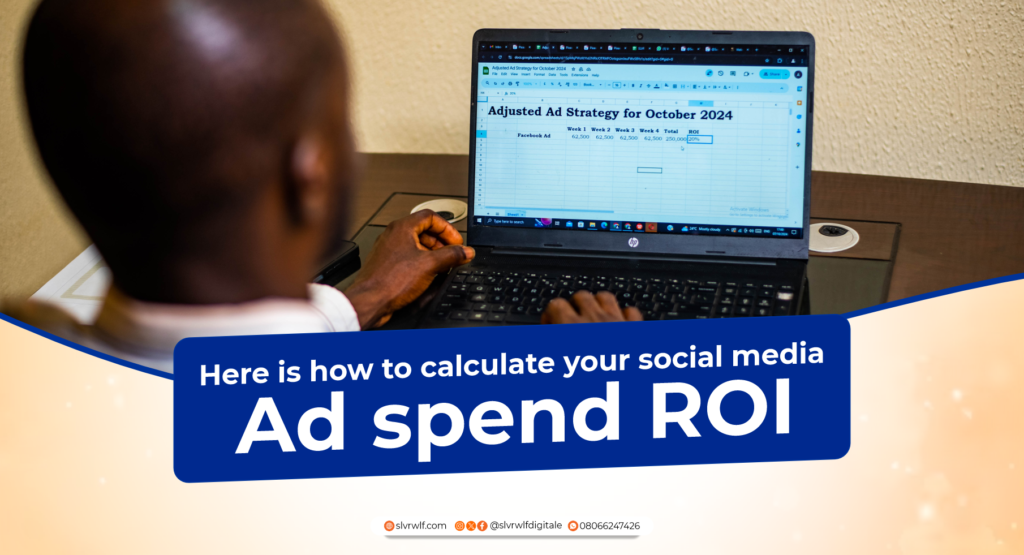
In today’s digital world, social media is no longer optional for small businesses—it’s a must. But simply being active on social platforms isn’t enough. You need to ensure that your investment of time, energy, and money is actually paying off. That’s where measuring your Social Media Return on Investment (ROI) comes in. By understanding the impact of your social media efforts, you can make better decisions, refine your strategy, and ultimately increase your profits.
Here’s a simple guide on how small business owners can effectively measure their social media ROI and make the most out of their digital marketing efforts.
What is Social Media ROI?
Social Media ROI is a way of determining the return (profit or value) you’re getting from the time and money you invest in social media activities. ROI is typically expressed as a percentage and helps answer one fundamental question: “Is this working?”
Measuring ROI allows you to see whether your digital marketing efforts are delivering results. It can reveal what’s working well, what needs improvement, and which channels are giving you the best return. Without this insight, it’s impossible to know if your social media marketing strategy is worth the effort.
Step 1: Set Clear, Measurable Goals
Before you can measure your social media ROI, it’s essential to know what you’re aiming for. What do you want to achieve through social media? Common goals for small business owners include:
- Increasing website traffic
- Generating leads
- Boosting sales or revenue
- Raising brand awareness
- Growing audience engagement
Each goal will have a different approach when it comes to measuring ROI. For example, if your goal is to increase website traffic, your success metrics will focus on clicks and visits from social platforms. On the other hand, if you’re aiming to increase sales, your primary measurement will be conversions.
Step 2: Track Your Key Metrics
Once you’ve established your goals, you’ll need to track the right metrics. Here are a few key performance indicators (KPIs) to watch for depending on your objective:
- For Website Traffic: Look at the number of visitors coming to your website from social media. Tools like Google Analytics can help you monitor referral traffic.
- For Engagement: Keep an eye on likes, comments, shares, and overall interaction with your posts. These show how your audience is connecting with your content.
- For Lead Generation: Measure how many leads you’ve gained through social media signups, email subscriptions, or inquiries.
- For Sales/Conversions: Track the number of purchases or conversions made directly from your social media efforts using tracking links, UTM codes, or integrated eCommerce platforms.
Each of these metrics can give you a more focused look at how your social media campaigns are performing. Combining these insights with a clear goal helps you understand your social media return on investment better.
Step 3: Calculate the ROI Formula
To calculate your social media ROI, you need a simple formula:
(Earnings – Cost) ÷ Cost x 100% = ROI
Here’s a breakdown:
- Earnings: This is the revenue or value generated by your social media efforts. For example, if you made N450,000 from a Facebook ad campaign.
- Cost: This is the total amount you spent on your campaign, including any paid ads, software tools, or agency fees.
So, if you earned N450,000 from a campaign and spent N250,000, the formula would look like this:
- (N450,000 – N250,000) ÷ N250,000 = 0.8
- 0.8 x 100 = 80% ROI
This means you gained 80% more than what you spent on that campaign. A good ad spend ROI is 3x or three times your ad spend.
Watch ROI Calculation on YouTube or use our ROI Calculator
Step 4: Refine and Optimise
Once you have calculated your ROI, the next step is to optimise. Take a look at what worked and what didn’t. Did certain types of posts drive more traffic or engagement? Were there particular campaigns that led to more sales?
For instance, you may find that video content performed better than static images or that your audience responded more to educational content over promotional posts. Use these insights to refine your future content and campaigns to maximise your ROI.
Why Measuring ROI Matters for Small Business Owners
Small business owners often operate with limited resources, so it’s critical to ensure that your investments—whether time or money—are actually delivering value. Measuring your social media ROI helps you:
- Allocate Budget Wisely: You can see which platforms are bringing in the most value, helping you decide where to focus your marketing budget.
- Make Data-Driven Decisions: ROI gives you the facts, so you can fine-tune your strategy based on what’s actually working.
- Grow Your Business: By measuring what works, you can scale your best campaigns and increase both revenue and brand visibility over time.
Conclusion
Measuring your social media ROI is essential for any small business looking to succeed in the digital space. It allows you to stay on top of your marketing performance, identify areas for improvement, and ensure you’re getting the best return on your investment.
If you’re feeling overwhelmed with tracking and optimizing your social media marketing, don’t worry—you don’t have to do it alone. Learn more about how outsourcing your digital marketing can help you grow your business without the stress.
Incorporate these strategies into your marketing efforts, and soon, you’ll have a clearer understanding of what’s working, so you can make smarter decisions that drive results.
And remember, Slvr Wlf is here to help create the best strategies to grow your business. You can use our ROI calculator if you already run ads for your business and want deeper insights.


Meet Abigail Anaba—your go-to expert for mastering digital strategy. With a postgraduate award in Creating Strategic Advantage from Warwick University, Abigail transforms complex digital challenges into clear, actionable insights. Her unique blend of storytelling and journalistic precision not only makes her strategies engaging and relatable but also drives real results.
